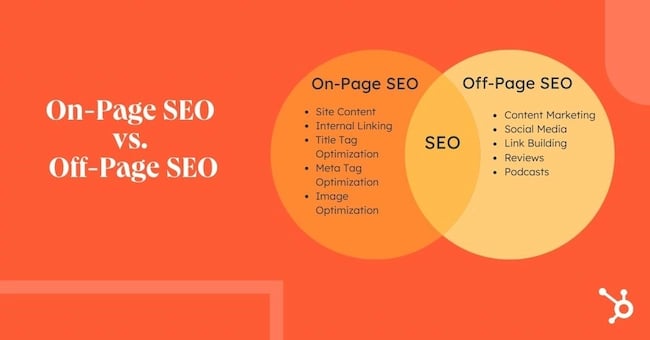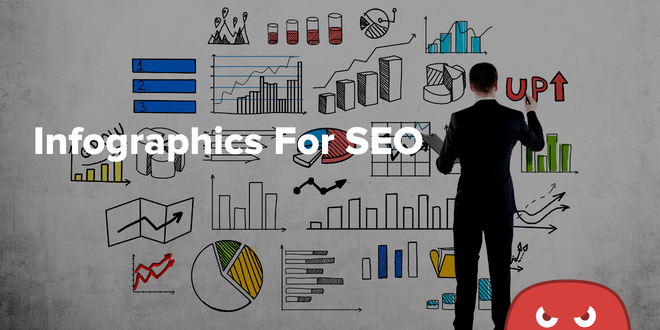Uncover the secrets of optimizing your headlines for SEO success. Learn how to craft irresistible headlines that boost your rankings.

Image courtesy of via DALL-E 3
Table of Contents
Search Engine Optimization (SEO) and headlines are two important factors that play a crucial role in making sure your content gets seen on the internet. But what exactly are SEO and headlines, and why do they matter so much for online visibility?
What is SEO?
SEO stands for Search Engine Optimization. It’s like a magic wand that helps your website or blog appear higher up in search engine results when people type in something related to what you’ve written. When you use SEO effectively, more people can find and read your awesome content!
What are Headlines?
Headlines are the catchy titles you see at the top of articles, blog posts, or news stories. They’re like a sneak peek into what the content is all about. Think of headlines as the first impression that can grab a reader’s attention and make them want to click and read more.
Why SEO in Headlines Matters
Now, imagine combining the power of SEO with engaging headlines. This magical mix helps to attract more readers to your content because it tells search engines like Google that your article is relevant to what people are searching for. That means more people can discover and enjoy what you’ve written!
Understanding SEO Basics
What Are Keywords?
Keywords are specific words or phrases that users type into search engines when looking for information. They are crucial in SEO because they help search engines understand the content of a web page. By using the right keywords, websites can improve their visibility and attract more visitors.
How Search Engines Work
Search engines, like Google or Bing, use complex algorithms to analyze websites and determine their relevance to a user’s search query. When a user enters a keyword, the search engine crawls through its index to find the most relevant pages. By optimizing your website with the right keywords, you increase the chances of appearing higher in search engine results pages (SERPs).
Creating Effective Headlines
When crafting headlines, it’s important to keep them short and sweet. Short headlines are not only easier for readers to digest quickly but also perform better in search engine results. Concise and clear headlines grab the attention of the audience, making them more likely to click on your content.
Using Strong Words
Strong words can significantly impact the effectiveness of your headlines. Words that evoke emotion or curiosity can make your headlines more engaging and clickable. By incorporating powerful language in your headlines, you can draw readers in and entice them to explore your content further.
Relevance to Content
One crucial aspect of creating effective headlines is ensuring they accurately reflect the content of your article. Misleading headlines can lead to a high bounce rate, where readers quickly leave your page after realizing the content doesn’t align with their expectations. By keeping your headlines relevant to your content, you can attract the right audience and improve your overall SEO performance.
Incorporating Keywords into Headlines
When it comes to creating headlines for your content, incorporating relevant keywords is essential for improving your search engine ranking and attracting the right audience. By strategically placing keywords in your headlines, you can increase the visibility of your content and align with the search intent of users. Here are some effective strategies for integrating keywords into headlines:

Image courtesy of blog.hubspot.com via Google Images
Finding the Right Keywords
Before crafting your headlines, it’s crucial to conduct keyword research to identify the most relevant and high-traffic keywords for your topic. Consider using tools like Google Keyword Planner or SEMrush to discover popular keywords that align with your content. By selecting the right keywords, you can ensure that your headlines are optimized for search engines and resonate with your target audience.
Keyword Placement
Once you’ve identified the appropriate keywords, it’s important to strategically place them in your headlines for maximum impact. Aim to include your primary keyword towards the beginning of the headline to make it more prominent and emphasize its relevance. Avoid overstuffing your headline with keywords, as this can appear unnatural and deter readers. By striking a balance and incorporating keywords seamlessly, you can improve the SEO performance of your headlines.
Matching Search Intent
When crafting headlines, consider the search intent of users and align your content with what they are looking for. Think about the specific questions or topics that your audience might be searching for and tailor your headlines to address their needs. By matching the search intent with your headlines, you can increase the likelihood of your content appearing in relevant search results and attract organic traffic to your website.
Testing Your Headlines
Once you have crafted your headlines with SEO in mind, it’s essential to test their effectiveness to ensure they are attracting the right audience. Here are some methods to help you evaluate and improve your headlines.
A/B Testing
A/B testing is a method where you create two versions of a headline and show them to different segments of your audience. By comparing the performance of each headline, you can determine which one resonates better with your readers. This data-driven approach can help you choose the most effective headline for your content.
Using Headline Analyzers
Headline analyzers are tools that evaluate the quality of your headlines based on factors like word choice, length, and emotional impact. These tools can provide valuable insights into how well your headline is likely to perform in terms of attracting clicks and engaging readers. By using headline analyzers, you can refine your headlines to maximize their impact.
Evaluating Performance
It’s crucial to monitor the performance of your headlines over time to see which ones are driving the most traffic to your content. Keep track of metrics like click-through rates and conversion rates to understand how well your headlines are resonating with your audience. By analyzing this data, you can make informed decisions on how to optimize your headlines for better results.
Common Mistakes to Avoid
Clickbait is a sneaky tactic used to lure people into clicking on a link by promising something sensational or intriguing, only to disappoint them with irrelevant content. It’s like a shiny wrapper hiding an empty box. To maintain your credibility and build trust with your audience, steer clear of clickbait headlines.

Image courtesy of www.thehoth.com via Google Images
Not Overusing Keywords
Keywords are essential for SEO, but overusing them in your headlines can do more harm than good. When you stuff too many keywords into your headline, it comes across as forced and unnatural. Remember, readability and relevance are key. Use keywords sparingly and make sure they flow seamlessly within your headline.
Staying Relevant
One of the biggest mistakes you can make with your headlines is misleading your readers. Your headline sets the expectation for what the article will deliver. If your headline promises one thing but the content veers off in another direction, you’ll quickly lose the trust of your audience. Always ensure that your headlines accurately reflect the content that follows.
Tools and Resources
Keyword research is a crucial step in creating SEO-friendly headlines. Tools like Google Keyword Planner, SEMrush, and Ahrefs can help you identify relevant keywords for your content. These tools provide insights into search volume, competition, and alternative keyword suggestions to improve your headline’s SEO performance.
Headline Generators
If you’re struggling to come up with engaging headlines, consider using headline generators like CoSchedule’s Headline Analyzer or Sharethrough’s Headline Tool. These resources analyze your headline for clarity, sentiment, and length, helping you craft attention-grabbing and SEO-friendly titles.
SEO Training Resources
For those looking to deepen their understanding of SEO principles, various online courses and articles can provide valuable insights. Websites like Moz, HubSpot, and Search Engine Journal offer comprehensive guides and tutorials on SEO best practices, keyword optimization, and headline strategies. Investing time in learning from these resources can enhance your headline creation skills and boost your online visibility.
Conclusion
In conclusion, understanding and implementing SEO in headlines is crucial for boosting online visibility and attracting more readers. By combining SEO strategies with engaging and relevant headlines, you can improve your search engine ranking and drive more traffic to your content.
Image courtesy of blog.hubspot.com via Google Images
Recap of Key Points
Throughout this article, we have discussed the importance of incorporating SEO into headlines to enhance visibility. We started by defining what SEO and headlines are, highlighting their significance in capturing audience attention and improving search engine rankings. We then explored fundamental SEO concepts such as keywords and how search engines use them to rank pages. Additionally, we provided guidance on creating effective headlines, integrating keywords strategically, testing headline performance, and avoiding common mistakes.
Remember, the key to successful headline optimization lies in crafting clear, engaging, and relevant headlines that resonate with both readers and search engines. By keeping your headlines concise, using powerful words, aligning with search intent, and testing their effectiveness, you can enhance the visibility and impact of your content.
Final Tips
As you continue to create headlines for your content, here are some final tips to keep in mind:
- Regularly update and revise your headlines to maintain relevance and effectiveness.
- Avoid keyword stuffing and focus on creating headlines that accurately reflect your content.
- Use tools like keyword research tools, headline generators, and SEO training resources to optimize your headlines effectively.
By following these tips and best practices, you can elevate your content’s visibility, attract more readers, and improve your overall online presence. Remember, a well-crafted headline can make all the difference in capturing your audience’s interest and driving traffic to your content.
Want to turn these SEO insights into real results? Seorocket is an all-in-one AI SEO solution that uses the power of AI to analyze your competition and craft high-ranking content.
Seorocket offers a suite of powerful tools, including a Keyword Researcher to find the most profitable keywords, an AI Writer to generate unique and Google-friendly content, and an Automatic Publisher to schedule and publish your content directly to your website. Plus, you’ll get real-time performance tracking so you can see exactly what’s working and make adjustments as needed.
Stop just reading about SEO – take action with Seorocket and skyrocket your search rankings today. Sign up for a free trial and see the difference Seorocket can make for your website!
Frequently Asked Questions (FAQs)
What are the Most Important Elements of an SEO-Friendly Headline?
An SEO-friendly headline should include relevant keywords that people are searching for. It should be clear, concise, and engaging to attract readers’ attention. Additionally, incorporating powerful and emotional words can make your headline more appealing. Lastly, ensure that your headline accurately reflects the content of your article to avoid misleading readers.
How Often Should I Change My Headlines?
It is not necessary to change your headlines frequently unless there is a significant update or a change in the focus of your content. However, you can consider testing different headlines using A/B testing techniques to see which performs better. Regularly monitoring your headlines’ performance and making adjustments accordingly can help improve their effectiveness.
Can I Use the Same Keywords in Multiple Headlines?
While it is acceptable to use the same keywords in multiple headlines, it is essential to ensure that each headline is unique and relevant to the specific content it represents. Overusing the same keywords across all your headlines may lead to a lack of variety and potentially lower search engine rankings. It’s best to use a diverse set of keywords and variations to appeal to a broader audience and improve SEO.







